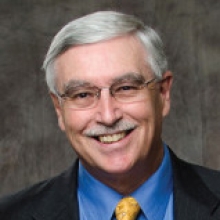Areas of Innovation at the ETL Consortium Schools: The Incentive Structure
Previously, we have drawn from the Educating Tomorrow’s Lawyers (ETL) survey to describe the 23 ETL Consortium schools, explore the kinds of curricular innovations currently in place, and look at their support for faculty engagement in the improvement of teaching and learning. This post continues those analyses by looking at what schools are doing with respect to faculty professional activity related to teaching and learning. Along with an institutional commitment to faculty development, successful innovation also requires an incentive structure that appropriately recognizes and rewards professional activity related to teaching and learning. And creating such an incentive structure may be the toughest challenge.
Because of the importance of the incentive structure, the ETL survey asked a general question about any new initiatives since 2001 that recognize the importance of such professional activity. In addition to this question, it also asked about initiatives in four specific areas that mark key decision points at the heart of the personnel process—decisions involving hiring, promotion, tenure, and merit pay. Initiatives involving the place of faculty professional activity related to teaching and learning reflect a supportive incentive structure for faculty that will help allow innovation to thrive. This post reports on the responses of the ETL Consortium schools to these questions in comparison to non-ETL schools.
Of the 118 U.S. law schools responding to the ETL survey, 57% had started at least one new initiative since 2001 that recognizes the importance of faculty professional activity related to teaching and learning, of which, 52% of ETL members and 58% of non-ETL members had. While these figures are encouraging, they are significantly lower than those reported in our previous post with respect to faculty development initiatives focused on teaching and learning. There we noted that 78% of all schools reported at least one new initiative since 2001 in that area. More specifically, 74% of ETL schools reported such an initiative, as did 80% of non-ETL schools. There is simply less activity when it comes to incentive structures that appropriately recognize and reward professional activity related to teaching and learning than there are for faculty development initiatives.
While it is possible that some schools made adjustments in their personnel processes before 2001 that take this kind of professional activity into account, only three of the survey’s 118 respondents, indicated that this was the case for them. While these three respondents provided no answers to the questions regarding initiatives started in these areas since 2001, their write-in responses indicated that they have long considered professional activity related to teaching and learning in their personnel decisions.
When we look at the figures for initiatives involving those four key decisions points in the personnel process—hiring, promotion, tenure, and merit pay—the levels of activity are even lower. And this overshadows any of the differences between ETL and non-ETL members. Figure 1, which presents the percentages of ETL and non-ETL members who indicated starting an initiative since 2001 in each of those four areas, clearly shows this. It suggests a rather soft commitment to a decisive factor for fostering innovation.
Figure 1.
Non-ETL and ETL Members:
Responses to Specific Faculty Professional Activity Questions

Of the four areas in Figure 1, arguably the most important are hiring and tenure – who is admitted to the legal academy and what counts is in determining who gets to stay as a permanent member. Hiring has the highest percentage of affirmative responses for both ETL and non-ETL schools, meaning that at least some schools see professional activities related to teaching and learning as important when looking for new members to bring into their faculties. But tenure, the other end of the process, has the smallest percentage of affirmative responses. Relatively few schools (ETL or non-ETL members) have started an initiative in this area. And, it may be the area most resistant to change.
The reason for resistance is not difficult to understand. Giving professional activity related to teaching and learning a meaningful place in the decision to grant tenure represents a fundamental shift in what defines the legal academy and it what it means to be a member of that community of scholars. One key factor in defining the legal academy, in contrast to the practicing legal profession, is a concern with the law as an arena for abstract intellectual endeavor. The legal academy is to be a world apart; one concerned with theory rather than practice, and this is reflected in the problematic place of law school clinicians in the legal academy. A member of the legal academy is one whose professional activities focus on legal theory in some form.
A second key factor in defining the legal academy, in contrast to other academic disciplines, is its approach to teaching. Some form of the Socratic method is held to be the best approach to teaching and is one deeply ingrained the legal academy. It is one that distinguishes the legal academy from other scholarly disciplines in which this approach is not the norm. By definition, recognizing professional activity related to the process of teaching and learning – activity focused on how best to teach law students says that those deeply ingrained ways of doing things may not work all that well. It means encouraging and rewarding a very different kind of professional activity, one that challenges both of those key factors at the heart of the legal academy’s sense of itself.
While the proportion of schools with new initiatives that recognize this kind of professional activity may be rather small, there is still reason for optimism. There is evidence of coordinated efforts on the part of those schools that are active. Few of them are simply starting just one initiative in this area. For instance, both ETL and non-ETL members who report an initiative involving the tenure decision are also likely to report an initiative involving the hiring and promotion decisions.
More interesting and important is evidence of coordinated efforts involving initiatives recognizing professional activity related to teaching and learning on the one hand, and initiatives in the areas of faculty development and in the area of curriculum on the other. This is especially so with regard to issues at the heart of the Educating Lawyers: Preparation for the Profession of Law (which were discussed in a previous post). There is such evidence for both ETL and non-ETL schools, but somewhat more evidence for the ETL schools.
For those ETL schools starting at least one initiative related to faculty professional activity, 83% of them also report a curricular initiative involving integrative approaches –linking doctrine, practical experience, and professionalism. And 75% of them reported curricular initiatives involving both integrative approaches and professional identity (instilling in students a normative sense of what it means to be a lawyer). For non-ETL schools that reported at least one initiative related to faculty professional activity, the comparable percentages are 73% and 53%, respectively.
Additionally, there is evidence of coordination involving key areas for faculty development initiatives discussed in the most recent previous post – faculty workshops focused on integrative approaches and faculty grants to support integrative approaches. For those ETL schools with at least one initiative related to faculty professional activity, 58% of them reported an initiative involving faculty development workshops on integration, and 75% had faculty development grants supporting integration. For non-ETL schools the comparable percentages are 47% for workshops focused on integrative approaches and 27% for faculty grants to support integrative approaches.
Such coordinated efforts are the key to innovation, and further exploration of them to follow...


